The Allure of Luxurious Candles: An In-Depth Exploration


Intro
In recent years, the market for luxurious candles has blossomed. This phenomenon is not merely about enhancing a space's aesthetic value; it is also rooted in deeper psychological and social factors. Individuals increasingly seek items that not only illuminate their rooms but also signify status and style. High-end candles are crafted using fine materials and often boast unique fragrances, transforming traditional notions of a mere home accessory into a symbol of personal expression.
Understanding why consumers are drawn to expensive candles reveals much about contemporary desires for indulgence and sophistication. Beyond functional use, these candles represent a lifestyle choice, where the desire for luxury intertwines with everyday experiences.
This article seeks to unpack the facets contributing to the allure of these high-end products. By examining the influences of fashion trends, craftsmanship, and branding, we can comprehend the intricate tapestry that these luxurious candles weave in the context of home decor and individual indulgence.
Fashion Trends
Luxurious candles do more than just provide fragrance and light; they also reflect current fashion trends. At the intersection of style and sophistication, these products often align with seasonal aesthetics and lifestyle movements.
Seasonal Styles
Different seasons bring about distinctive styles in home decor, and candles are no exception. During winter, warm and spicy scents, such as cinnamon and clove, often dominate. In contrast, spring favors fresh floral fragrances like peony or jasmine, invoking a sense of renewal.
"The choice of scent can influence mood and evoke memories, enhancing the overall experience of a space."
The presentation of the candle itself is also important. Designers create vessels that match seasonal decor trends, using colors and materials that harmonize with the ambiance of each time of year. Glass, ceramic, and even handcrafted options are popular, allowing for personalization in every setting.
Influencer Inspirations
Social media has played a pivotal role in popularizing luxurious candles. Influencers and designers frequently showcase their favorite high-end brands in stylish arrangements. Observing how these candles are integrated into home decor allows potential buyers to visualize their place in their own spaces.
Consumers often turn to platforms like Instagram and Pinterest for ideas. The visual appeal of luxurious candles featured in well-curated interiors offers both inspiration and aspiration. The influence of these digital platforms cannot be understated; they contribute to setting trends and driving consumer behavior.
Finale
The exploration of luxurious candles extends far beyond mere aesthetics. Understanding the underlying trends and influences allows individuals to appreciate their place in modern decor. As we navigate the ambiance these beautifully crafted items create, we also engage with the broader cultural and psychological currents that make them appealing in today's world.
Preamble to Expensive Candles
The world of luxurious candles has garnered significant attention in recent years. These products go beyond mere illumination; they embody a unique blend of artistry, material excellence, and emotional appeal. As people increasingly invest in their living spaces, high-end candles offer a way to express individuality and sophistication. The importance of this topic lies in understanding why some candles can command prices that are often surprising. Exploring the aspects of luxurious candles reveals much about consumer preferences and trends in home decor.
In this article, we will dissect what makes a candle expensive and desirable. We will look at various elements, including materials used, craftsmanship, and branding. Aside from aesthetics, we will also consider the psychological underpinnings that drive consumers towards these high-end products. Through a keen examination, we aim to paint a comprehensive picture of the allure that expensive candles hold in contemporary society.
Defining Really Expensive Candles
Expensive candles can be defined through several criteria. First, it is crucial to consider the materials involved. These candles often utilize premium waxes such as beeswax or soy, which are more difficult to source compared to conventional paraffin. Additionally, the inclusion of high-quality fragrance oils, whether natural or synthetic, can significantly influence a candle’s price. Furthermore, the intricacy of the design and finishing touches, like hand-poured elements, add to the overall cost.
The branding strategy also plays a role. Many premium candle brands position themselves in luxury markets, offering a lifestyle rather than just a product. These brands often leverage aesthetically pleasing packaging, which intensifies the perception of value. Lastly, the exclusivity associated with certain candles, whether through limited editions or unique collaborations, drives collectors and enthusiasts to pay a premium.
Historical Context of Candle Use
Candles have a long and storied history that dates back thousands of years. Initially, they served practical purposes—providing light before electricity became widespread. Cultures across the globe have used candles in religious ceremonies, celebrations, and daily life. The material used for making candles evolved, beginning with animal fats and later transitioning to beeswax and paraffin.
In more modern times, particularly in the 19th century, the introduction of mass production changed the dynamics of candle usage. However, as society becomes more health-conscious and aesthetics-driven, there is a resurgence in interest surrounding handmade and luxury candles. This historical perspective is crucial to understand how candles have evolved from utilitarian items to status symbols in contemporary home decor.
Material Quality in Luxury Candles
The material quality in luxury candles plays a crucial role in their overall appeal and performance. High-quality materials not only ensure a longer burn time but also affect the scent throw and environmental impact of the candle. Consumers of upscale candles expect a level of sophistication and uniqueness in the products they purchase. Thus, understanding the materials used helps demystify why some candles command high price tags.
Wax Types Used
Beeswax
Beeswax is often regarded as a premier wax choice for premium candles. It is a natural wax produced by honeybees, known for its unique honey-like fragrance and golden hue. A significant characteristic of beeswax is its ability to burn longer and cleaner than many other wax types. This makes it both a beneficial and popular option. As a luxury candle ingredient, beeswax contributes to an ambiance of warmth and coziness. The unique feature of beeswax is its natural ionization properties that can purify the air. However, some users may find it less affordable compared to other waxes.
Soy Wax
Soy wax, derived from soybeans, has gained traction as an eco-friendly alternative in the luxury market. Its appeal stems from its renewable nature and lower cost, which makes it accessible for various candle producers. The key characteristic of soy wax is its excellent scent throw. This means it can disperse fragrance well and provides a clean burn for hours. Soy wax is also biodegradable, appealing to environmentally-conscious consumers. Yet, soy candles may not possess the same longevity as those made from beeswax.
Paraffin
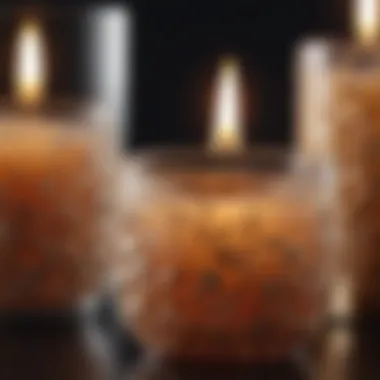
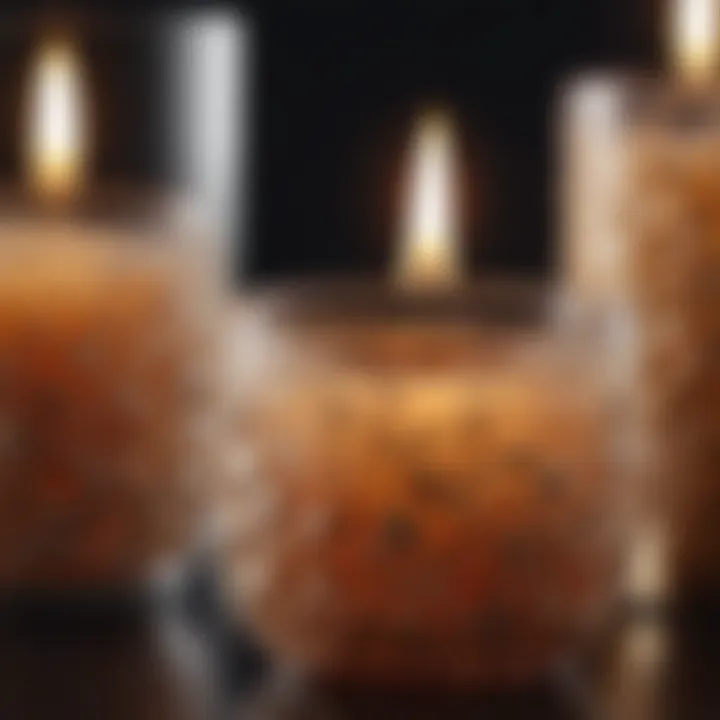
Paraffin wax, a petroleum byproduct, has been a staple in candle making for decades. One of its most notable advantages is its versatility, allowing for various color and shape options. Many luxury candles still use paraffin for its ability to retain scents effectively, making it a favorable choice in fragrance-heavy candles. However, paraffin doesn't burn as cleanly as natural waxes, potentially releasing toxins during combustion. As a result, its use is often scrutinized in the luxury segment.
Fragrance Essential Oils vs Synthetics
Natural Extracts
Natural extracts derived from plants and flowers add an unparalleled authenticity to candles. These extracts provide genuine scents, contributing to a rich olfactory experience. As a key characteristic of luxury candles, they often originate from sustainable sources, appealing to the conscious consumer. Natural extracts are also appreciated for their emotional connection—often evoking memories or feelings of nostalgia. However, the cost of sourcing quality natural extracts can drive up the price of these candles.
Synthetic Blends
Synthetic blends are commonly used in high-end candle making for their ability to create consistent and diverse fragrance profiles. One main advantage of synthetic scents is the capacity for complex notes that might be challenging to obtain from natural sources. They also tend to be more affordable and can enhance the candle's longevity due to their stability. However, some enthusiasts argue that synthetics fail to provide the same emotional resonance as natural extracts, leading to debates on authenticity in the luxury candle market.
Wick Selection and Its Impact
Cotton Wicks
Cotton wicks are a traditional choice in candle making, establishing a straightforward and effective burning experience. Their main advantage is their ability to create a steady flame, leading to even burning and consistent scent throw. The natural fibers in cotton wicks minimize soot production, enhancing indoor air quality. Still, users must consider that cotton wicks can require regular trimming to prevent excessive smoke during burning.
Wooden Wicks
Wooden wicks are becoming increasingly popular in luxury candles for their aesthetic qualities and unique burning characteristics. The sound of a wooden wick crackling can evoke a fireplace ambiance, adding to the overall sensory experience. Wooden wicks are also known to burn longer and produce a more substantial scent throw than cotton. Some disadvantages include the need for careful sourcing to ensure a quality product and the possibility of uneven burning if not fitted correctly in the candle.
Craftsmanship and Artistry
Craftsmanship and artistry represent the backbone of luxury candles. These elements highlight the attention to detail and the specialized skills involved in creating a product that is more than just a source of light. From the selection of high-quality wax to the design of the final product, every stage demands dedication. This commitment ensures that luxury candles are distinguished from their more commonplace counterparts. The allure of these candles often relies on the narrative of artistry that accompanies them, evoking both admiration and a sense of exclusivity.
Handcrafted vs Mass-Produced
The debate between handcrafted and mass-produced candles is crucial to understanding luxury. Handcrafted candles entail small-batch production. This approach allows artisans to control each variable, from the wax temperature to pouring techniques. It often results in unique pieces that reflect individual creativity. On the other hand, mass-produced candles prioritize efficiency and uniformity, which can compromise quality. While they may appeal to a wider audience, they tend to lack the personal touch characteristic of their handcrafted counterparts.
Design Aesthetics in Candle Making
The aesthetics of candle design play a significant role in their luxury appeal. This section examines two primary styles: minimalism and opulence.
Minimalism
Minimalism emphasizes simplicity and clarity. This design philosophy contributes to a sense of calm and understated elegance in home decor. The key characteristic of minimalism is its focus on essential elements, stripping away excessive details. This makes minimalistic candles versatile, easily integrating into various interior settings. The unique feature of minimalism lies in its ability to communicate sophistication without being overly extravagant. However, its disadvantages may include a lack of visual interest for some consumers seeking ornate designs.
Opulence
Opulence in candle design embodies richness and luxury. It often features intricate details, lush colors, and lavish packaging. This style appeals to consumers who value extravagance, drawing attention and admiration. The key characteristic of opulence is its ability to transform a space through grand aesthetics. It serves not just as a candle but as a statement piece within home decor. Yet, the exuberance of opulence can overwhelm some interiors, making it less suitable for minimalist enthusiasts. Navigating these preferences becomes essential when considering luxury candles for various settings.
"The essence of luxury candles transcends mere functionality, embodying artistry that resonates with personal taste and aesthetic goals."
The relationship between craftsmanship, design, and personal appeal shapes the luxury candle market. Understanding these elements allows consumers to make informed choices that reflect their individual style and values.
Branding and Marketing Strategies
In today's competitive market, branding and marketing strategies are crucial for positioning luxurious candles as desirable products. Effective branding not only differentiates these candles from cheaper alternatives but also cultivates an image of exclusivity and quality. Marketing strategies play a vital role in reaching the target audience, ensuring that luxury candles are seen as essential indulgences in contemporary home decor.
Luxury Branding Elements
Packaging
Packaging is one of the most visible aspects of luxury candles. It serves as the first impression for consumers, affecting their purchase decisions. A key characteristic of luxury candle packaging is its design; it often features premium materials, unique shapes, and elegant typography that convey sophistication. This attention to detail makes the packaging a beneficial choice for attracting discerning buyers who appreciate aesthetics.
A unique feature of high-end candle packaging is its functionality combined with beauty. For example, some brands use reusable containers, allowing consumers to repurpose them after the candle has finished burning. This aspect can enhance the perceived value of the product, as consumers feel they are making a more sustainable choice. However, excessive packaging can lead to negative perceptions if consumers view it as wasteful.
Presentation
The presentation of luxury candles extends beyond packaging. It encompasses how the product is displayed and marketed in stores and online. A key characteristic of effective presentation is the environments in which these products are showcased. For example, premium candles often appear in well-designed displays that reflect the brand's image and ethos. This presentation strategy can make consumers feel more inclined to explore and ultimately buy the product.
An important feature of presentation is the use of lifestyle imagery in marketing materials. Such imagery places luxury candles in aspirational settings, enhancing their desirability. While this can effectively attract potential buyers, brands must ensure the presented lifestyle is relatable to their target audience. Creating an unattainable image can deter potential customers who do not identify with it.
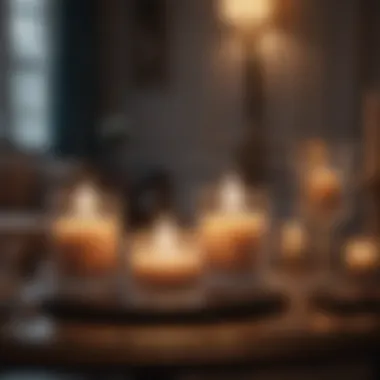
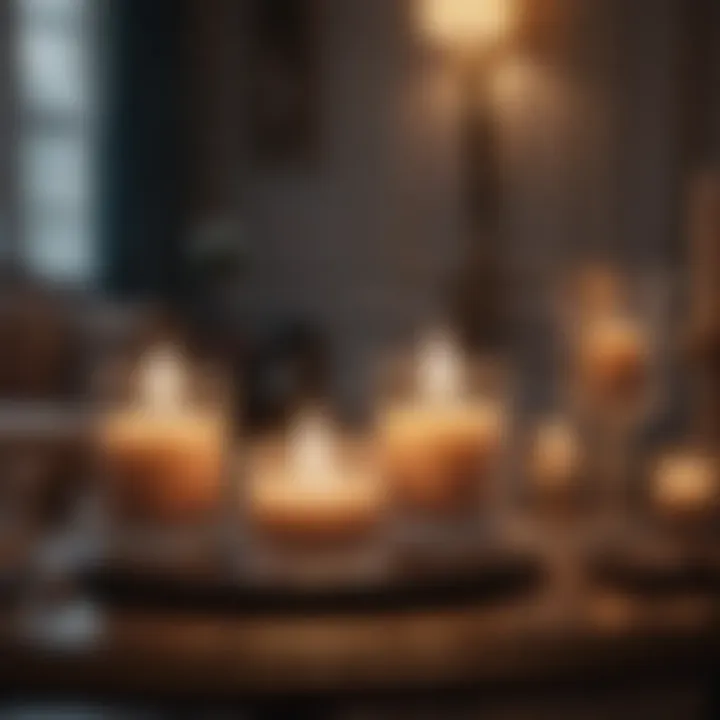
Influence of Celebrity Endorsements
The influence of celebrity endorsements in the luxury candle market cannot be understated. Celebrities often embody aspirational qualities that resonate with consumers. When a well-known figure endorses a luxury candle brand, it provides an immediate credibility boost. This often translates into increased consumer interest and higher sales.
Endorsements serve as powerful marketing tools, tapping into the emotional connections fans have with celebrities. However, this strategy comes with considerations. Relying heavily on celebrity endorsements may alienate some customers who feel disconnected from the celebrity culture. Therefore, finding a balance in marketing efforts is essential, allowing brands to appeal to broader audiences while still leveraging star power to enhance brand prestige.
"The right branding strategy can elevate the perception of luxury candles from mere products to coveted lifestyle items."
Consumer Psychology
Consumer psychology is a critical element in understanding the allure of luxurious candles. It digs into the mental processes that influence buying behavior and appreciates the intricate relationship between product and consumer. In the context of expensive candles, this field of study highlights various psychological triggers that create a strong connection between the consumer and the product. By examining consumer psychology, we uncover how people perceive value, the emotional connections they form with scents, and the overall impact on their purchasing decisions.
Perception of Value in High-End Products
The perception of value in high-end products is multifaceted. Contrary to general assumptions, the price does not merely define the worth of luxury candles. Consumers often judge the quality based on materials, craftsmanship, and brand reputation. A luxury candle made from organic soy wax or high-grade beeswax commands a premium simply for the material alone. Consumers exhibit a willingness to pay because they equate price with quality.
Moreover, marketing strategies further enhance this perception. Brands often utilize storytelling techniques that position their products as a unique experience rather than just a commodity. This strategy transforms a simple object into a narrative of luxury, exclusivity, and artistry, which often proves compelling to potential buyers.
Research shows that when consumers perceive a product as luxurious, they associate it with higher quality and better performance. Such perceptions are supported by various signals including packaging that reflects elegance, brand heritage, and the reputation cultivated by lived experiences from other customers. Hence, understanding these aspects is invaluable for companies targeting high-end consumers.
Emotional Connection with Scent
Scents play a profound role in shaping emotional connections. Candles, by design, are meant to invoke feelings and memories. When a particular fragrance resonates with a consumer, it can trigger nostalgia, relaxation, or even excitement. This emotional aspect is especially significant for luxury candles, where the allure stems not solely from physical ingredients but from the profound psychological responses prompted by scent.
High-quality fragrances used in luxury candles often comprise complex layers, enhancing their ability to connect emotionally. Brands carefully curate these scents to create an ambiance tailored to evoke specific reactions—be it soothing lavender, refreshing citrus, or warm vanilla. Consumers often find solace in engaging with scents that mirror their personal experiences or aspirations.
When consumers purchase luxury candles, they are not just buying a product; they are investing in an experience that is intimate, personal, and deeply emotional. By tapping into these psychological aspects, brands are able to forge lasting connections with their clients, leading to loyalty that transcends mere transactional interactions.
"The true power of luxury candles lies in their ability to forge connections that go beyond the product itself, intertwining with the very essence of personal lifestyle."
Understanding consumer psychology offers businesses insights into the reasons behind the extravagant prices and the intrinsic value these candles hold for their buyers. It is essential to recognize these elements as they significantly shape the overall market for luxury candles.
Trends in the Candle Market
Understanding the trends in the candle market is vital. As one explores the growing allure of luxurious candles, it becomes evident that consumer preferences are shifting. These trends not only influence what types of candles are being produced but also shape their pricing strategies. Today, consumers seek more than just scents; they desire unique experiences. This section examines the current trends impacting the industry, focusing on sustainability and cultural influences.
Sustainability Factors
Sustainability has emerged as a major consideration within the candle market. Consumers are increasingly aware of environmental impact. They are opting for candles made from sustainable materials, like soy wax or beeswax. Many brands highlight their eco-friendly practices. For example, some companies utilize recycled packaging and sources from renewable resources.
The rise of vegan candles also reflects this shift. Such candles avoid animal-derived ingredients. Customers now look for certifications like cruelty-free and organic. These factors add value to luxury candles, making them more appealing. Buying a sustainable product provides a sense of responsibility for consumers. They feel their choices contribute positively to the environment.
Additionally, brands like Diptyque and Jo Malone emphasize sustainable production methods. This commitment resonates with eco-conscious buyers. As more consumers align their purchasing decisions with their values, companies must adapt their strategies. Ignoring sustainability could mean losing a vital segment of the market.
Cultural Influences on Candle Choices
Cultural influences play a significant role in shaping consumer choices regarding candles. Traditions and practices unique to various regions affect scent preferences and usage. For instance, in some cultures, particular scents are associated with celebrations or rituals. In contrast, others might gravitate towards simpler, minimalist designs.
Regional trends are often visible in candle packaging and branding. Scandinavian designs tend to be understated and functional. Meanwhile, products from the Middle East might incorporate opulence and vibrant colors. This variation also highlights how important cultural storytelling is in marketing.
The globalization of the market introduces a fusion of different styles and scents. Consumers may explore exotic fragrances influenced by far-away lands, thereby expanding their sensory experiences. High-end brands often curate collections that reflect this diversity.
"Understanding cultural influences is crucial for brands looking to create resonant products that cater to a diverse audience."
Pricing Dynamics
Understanding the pricing dynamics of luxurious candles is crucial for both consumers and manufacturers. Price does not merely reflect the cost of materials and labor but encapsulates a combination of factors that convey quality, exclusivity, and brand identity. In a market where consumers seek unique and high-end products, the price can also influence perceived value and desirability. Analyzing pricing dynamics aids in comprehending why some candles command significantly higher prices than others, and what justifications underpin these costs.
Factors Influencing High Prices
Several factors contribute to the elevated prices of luxurious candles. These include:
- Material Quality: The use of high-quality wax, such as beeswax or premium soy, impacts the overall cost. Natural materials tend to be more expensive than synthetics.
- Craftsmanship: Hand-poured and artisan candles take time and skill to create. The level of craftsmanship often correlates with higher prices, as artisans devote time to perfecting each piece.
- Packaging: Luxury candles often come in aesthetically pleasing and elaborate packaging that enhances presentation and brand image. This adds to the production cost.
- Brand Reputation: Established brands with a strong identity can charge more due to their reputation. Consumers may be willing to pay a premium for the assurance of quality and exclusivity.
- Limited Editions: Seasonal or limited-edition offerings often carry higher price tags due to their scarcity.
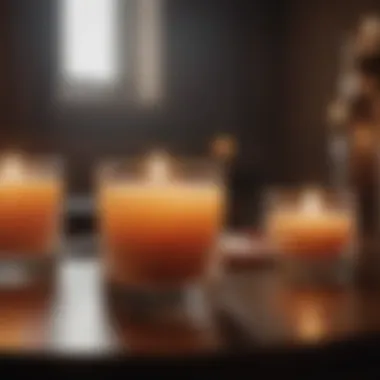
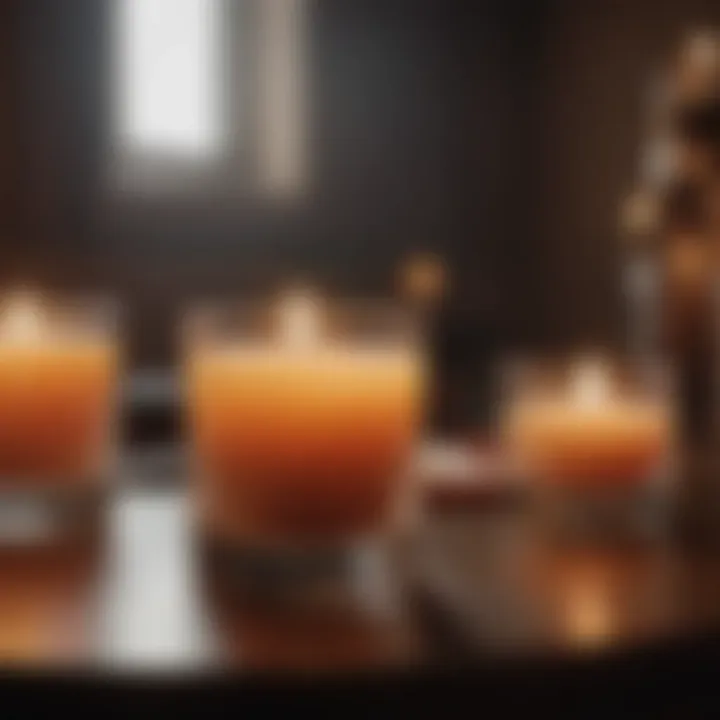
"In a high-end market, the perception of value can be as important as tangible quality."
These elements combined create a specific narrative that justifies the price increase in comparison to more standard candles.
Price Comparison Across Brands
When comparing prices across different luxury candle brands, one can observe significant variations based on quality, ingredients, and brand positioning.
- High-End Brands: Brands like Diptyque or Jo Malone typically price their candles between $50 to $80 due to their premium ingredients and design aesthetics.
- Mid-Range Brands: Companies such as Voluspa and Paddywax often offer candles in the $30 to $60 range, balancing quality with accessibility.
- Niche Artisans: Some artisan brands may charge upwards of $100 for their unique scents and handcrafted elements, appealing to a niche market that values craftsmanship and exclusivity.
Consumers are often encouraged to explore different brands in terms of what they offer. Factors like unique scent profiles, burn time, and aesthetic appeal can also play crucial roles in determining whether a candle is worth its price.
This analysis of pricing dynamics provides essential insights into purchasing decisions and the broader context of luxury candles. By understanding these factors, consumers can better appreciate the worth behind each candle they consider for their personal sanctuary.
Buying Guide for Expensive Candles
When engaging with the world of high-end candles, understanding how to make informed purchasing decisions is crucial. Expensive candles are often crafted with superior materials and meticulous attention to detail, adding complexity to their differentiation in pricing. This guide helps you navigate the overwhelming variety of options while ensuring you find a candle that aligns with your goals.
What to Look For When Purchasing
Selecting an expensive candle involves examining several factors that contribute to its quality and overall experience. Here are key considerations:
- Wax Quality: The type of wax significantly influences the candle’s burn time and scent throw. Opt for candles made from natural sources like beeswax or soy wax. These tend to burn cleaner and longer than paraffin.
- Fragrance Ingredients: Identifying whether a candle uses high-quality essential oils or synthetic fragrance can help gauge its value. Natural extracts often provide a more authentic scent experience.
- Wicking Material: The wick type can impact both the performance and safety of the candle. Candles with cotton or wooden wicks may deliver a more pleasant and steady flame.
- Burn Time: Expensive candles should ideally offer extended burn times. Always check the product details to gauge how long you can enjoy the scent before depleting the candle down.
- Packaging and Presentation: Luxury candles often come in aesthetically pleasing vessels that can complement your decor. Consider how the packaging aligns with your style, as it adds to the overall luxurious experience.
By focusing on these elements, you can be assured of acquiring a candle that not only appeals to your senses but also adds value to your home.
Recommendations for Top Luxury Brands
When investing in luxury candles, the brand often plays a vital role in defining the overall experience. Here are some esteemed brands known for their exceptional products:
- Diptyque: Renowned for its uniquely blended fragrances, Diptyque provides an extensive range of scents that are both artistic and sophisticated.
- Jo Malone: Famous for its elegant packaging and rich fragrances, Jo Malone offers candles that can transform atmosphere and mood.
- Cire Trudon: This historical brand brings centuries of craftsmanship into candle making, presenting luxurious scents in beautifully designed vessels.
- Le Labo: Known for their exclusivity and artisanal approach, Le Labo candles feature distinct fragrances that create memorable experiences.
- NEST Fragrances: Offering a blend of modern design and unique fragrances, NEST appeals to a wide audience with various scent options.
Experimenting with different brands helps to reveal personal preferences, as each offers a unique take on luxury candles. By following this guide, you are equipped to make informed choices that enhance your environment with the allure of luxurious candles.
Creating an Atmosphere with Luxury Candles
The significance of creating an atmosphere with luxury candles cannot be overstated. These candles act as more than mere sources of light; they transform a room's ambiance and evoke emotions tied to scent and aesthetics. The use of high-end candles infuses elegance into home decor, while also offering a sensory experience that is often tailored to personal preferences. This section elaborates on the essential elements, benefits, and considerations associated with utilizing luxurious candles in various settings.
Strategic Placement in Home Decor
Strategic placement of luxury candles is crucial for maximizing their impact. First, consider the mood you want to create in specific areas of your home. For example, placing candles in the living room can promote a cozy and welcoming atmosphere, especially during gatherings. Conversely, in bedrooms, softer scents can enhance relaxation and induce restful sleep.
When positioning candles, keep in mind the principles of balance and symmetry. Larger candles can serve as centerpieces on dining tables, while smaller votives can be placed along mantelpieces or windowsills, offering visual appeal without overwhelming the space. High-end candles often come in beautifully designed jars that can complement your decor. Combining different heights and sizes can add visual interest.
Additionally, consider the places where natural light filters in. Light reflects off the candle's surface, creating engaging shadows and highlights that enhance the overall decor style. Utilizing these tactics allows you to create a thoughtful and chic arrangement that not only looks good but also feels good.
Pairing Scents with Different Settings
Scent plays a pivotal role in defining the atmosphere alongside placement. Each space in the home might benefit from distinct fragrances that serve different purposes. For example, an invigorating citrus scent may be ideal for kitchens and dining areas, promoting energy and appetite. In contrast, warm vanilla or sandalwood is often associated with relaxation, making it perfect for bedrooms or reading nooks.
When choosing scents, consider the seasonality and themes you wish to convey. Fresh, floral fragrances might evoke springtime, while richer, earthy scents can provide warmth during the winter months. The harmony between scent and setting becomes apparent when one carefully aligns them.
To enhance this pairing process, try these tips:
- Create Scent Zones: Assign specific fragrances to particular areas. This will prevent scent overload and can establish a refreshing path throughout the home.
- Use Complementary Scents: Consider using candles with scents that harmonize with existing fragrances in the room. For example, a lavender candle can pair well with linen sprays or essential oil diffusers that emit a similar aroma.
- Seasonal Variations: Change your candle selections according to the time of year. This adds variety and aligns with nature’s cycles.
"The right candle can redefine a space, breathing life into rooms and forming a delicate interplay between visual and olfactory experiences."
By carefully designing the atmosphere with luxury candles, individuals can enrich their living spaces, making them inviting and conducive to positivity.
Ending
The Enduring Appeal of Expensive Candles
The enduring appeal of expensive candles lies in their ability to offer not just fragrance but also a sense of luxury and sophistication. Unlike ordinary candles, which serve basic functional purposes, luxury candles encapsulate a lifestyle—often embodying ideals of comfort and refinement. Their unique scents create atmospheres that can evoke memories or feelings, enhancing personal spaces. This emotional engagement is a crucial factor that keeps consumers coming back, further solidifying the position of high-end candles within the home decor market.
Future Outlook for the Luxury Candle Market
Looking ahead, the future of the luxury candle market appears promising, fueled by trends prioritizing wellness and sustainability. As consumers become more environmentally aware, brands that emphasize eco-friendly practices and materials are likely to thrive. The demand for artisanal products continues to grow, suggesting that handmade and small-batch candles may see a rise in popularity.
Moreover, as digital marketing evolves, so does the accessibility of high-end brands. Online shopping platforms provide an opportunity for greater visibility, allowing consumers to discover unique products from international markets. Therefore, a fusion of tradition and innovation will likely shape the next chapter in the world of luxurious candles, appealing to a broader audience than ever before.



